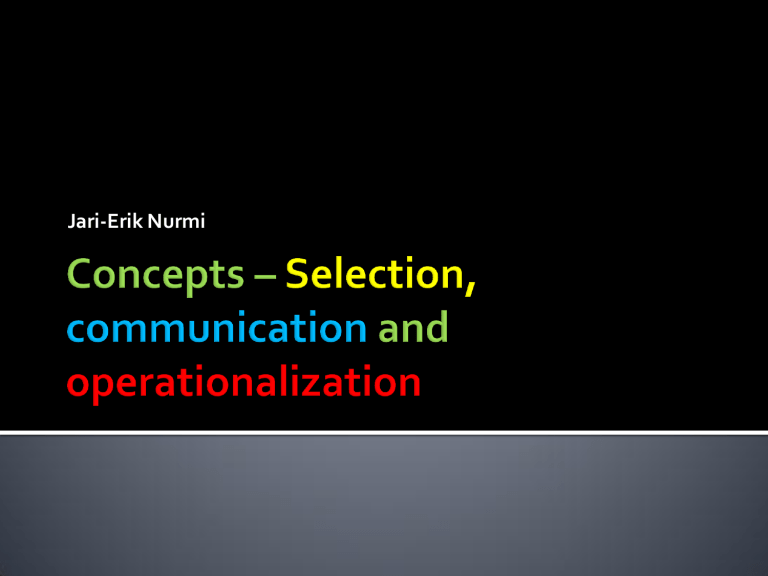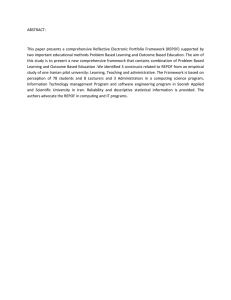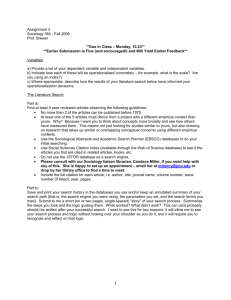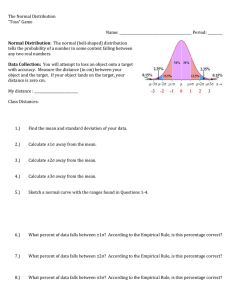
Jari-Erik Nurmi I will take a more practical, interpersonal, and empirical view to concepts/ constructs … different in different disciplines - mathematics, formal logic, … - philosophy, social sciences, … - psychology My background is … - developmental and educational psychology - empirical research and statistical analysis Practical use of concepts A concept is an abstract and generalized idea that refers to some phenomenon in world (or somewhere else). A construct (or factor) refers to a concept including an idea about how it is measured I use these words to refer same thing Abstract and general representation of a group of similar objects Concept: A representation, image, schema, internal model, script, etc. Concepts are represented in human memory as memory traces Ulric Neisser: Perceptual cycle Concepts direct and regulate: - perception - behavior In other words, ... … concepts are important parts of scientific reasoning and testing theories Theories Model construction Concepts/ constructs Concept analysis Operationalization Phenomena Formal conceptual analysis is seldom done in empirical research What is more important is to make sure that other scientists understand what you mean by using particular concepts/ constructs We typically talk and write to people who are members of the same ”language community” For this reason conceptual analysis is not typically needed, as ... You operate in certain language community, and participants share the same understanding of the constructs A: People use different concepts to refer to same phenomenon B: People use a same concept to refer to somewhat different phenomenon, or ... C: The borders of used concepts are ”fuzzy” A C C P B C C P P P Concepts as such are seldom interesting What is interesting is the theories and models that are defined on the basis of concepts Particularly interesting is whether the theories and models ... desribe phenomena in valid, meaningful and useful ways Are true: they represent reality Idea identify key concepts to describe your idea For example, ”children’s characteristics activate certain kind of parenting” ”children’s characteristics” ”impact” ”parenting” What you mean by each concept ? Previous use of concept (history) Do your undertanding match with previous understanding if so, no need to define the concept if not, define the concept or create a new one Is there other related concepts, and what is the relation of your concept to the other concepts If not clear, define your concept in relation to other concepts The role of concept (s) in the model Does the model or theory require definition or specification of your concept Does the operationalization require definition or specification of your concept Tell about your idea, concepts, model or theory to other people Do they understand what you say What kind of questions they have It is very important people understand you concepts and models Make a literacy search concerning your concepts and models: what is known previously? modify your concepts, model or theory Plan a study to test your model or theory Operationalize the concepts Plan the research design Define what kind of results would provide evidence or counter evidence for your model May be important in empirical research Is very important in theoretical reviews Is crucial in conducting meta-analyses Plan the way to measure your concept Is there available measures of the concept/ construct use them If not create a new measure What is the best data source: self-report Others’ report archival data Tests Physiological measurement etc. Make sure your concept/ construct is measured in valid and reliable way Test a measurement model of the concept/ construct A concept or construct is measured by the use of variables Decide the scale you use (categorical, ordinal or nominal) Use several variables per concept/ construct You can an estimate the reliability and goodness of measurement Select variables to measure you concept/ construct Create a measurement model by using confirmatory factor analysis Test the measurement model Test invariance of measurement in different samples Calculate also reliabilities for the construct: Internal consistency Split-half Stability Construct V1 V2 V3 What is the fit of the model: i.e., does model fit the empirical data Are factor loadings OK Is there a need to estimate the error terms of Vars V11 T1 T2 Construct 1 Construct 2 V12 V13 V21 V22 V23 In addition … Can factor loading T1 and T2 be set to be identical How stable is the construct Is there a need to estimate the error terms of between Vars T1 and T2 Go to groups of 4-6 people Discuss: When to use old concept and when to create new concept? Who needs to undertand your concepts? What is important in operationalization of the concept? Was there something you did not understand? What would you like to ask from the lecturer?



